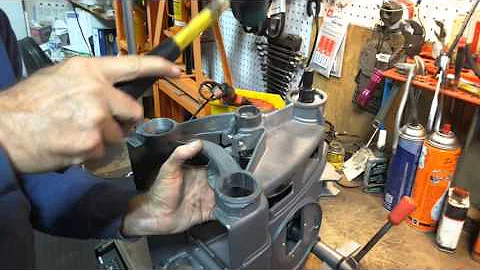Mark Alan Gilmer
age ~59
from Leander, TX
- Also known as:
-
- Mark A Gilmer
- Mark Te Gilmer
- Mark Gilmel
- Mark Gillmar
- Phone and address:
- 3004 Vista Heights Dr, Leander, TX 78641
Mark Gilmer Phones & Addresses
- 3004 Vista Heights Dr, Leander, TX 78641
- Huntsville, TX
- Cedar Park, TX
- 9734 Farrell St, Houston, TX 77070 • 2814773035 • 2818946412
- 1507 Highpointe Grn, Spring, TX 77379 • 2814304386
- Humble, TX
- Cypress, TX
- Austin, TX
- 307 Angus Dr, Cedar Park, TX 78613
Work
-
Company:Lockridge Grindal Nauen P.L.L.P.
-
Address:
Name / Title
Company / Classification
Phones & Addresses
manager
DMFLC, LLC
OWN AN INTEREST IN AND ACT AS A MEMBER OF TDG MULKIN LLC
OWN AN INTEREST IN AND ACT AS A MEMBER OF TDG MULKIN LLC
Cedar Park, TX 78613
Resumes

Training Delivery Manager At Apple Inc.
view sourcePosition:
Training Delivery Manager at Apple Inc.
Location:
Austin, Texas Area
Industry:
Information Technology and Services
Work:
Apple Inc. since Nov 2009
Training Delivery Manager
Hewlett-Packard May 2007 - Oct 2008
Director, Personal Systems Group (PSG) Sales, Learning & Development
Hewlett-Packard 2005 - 2007
Manager, Sales Development Center of Expertise, Learning & Development
Hewlett-Packard 2002 - 2005
Director, World Wide Product & Technology Training
Compaq 1999 - 2002
Manager, North America Partner and Customer Training
Training Delivery Manager
Hewlett-Packard May 2007 - Oct 2008
Director, Personal Systems Group (PSG) Sales, Learning & Development
Hewlett-Packard 2005 - 2007
Manager, Sales Development Center of Expertise, Learning & Development
Hewlett-Packard 2002 - 2005
Director, World Wide Product & Technology Training
Compaq 1999 - 2002
Manager, North America Partner and Customer Training
Education:
Southern Union State Community College 1984 - 1987

Mark Gilmer
view source
Mark Gilmer
view source
Mark Gilmer
view sourceVehicle Records
-
Mark Gilmer
view source -
Address:1507 Highpointe Grn, Spring, TX 77379
-
VIN:JTMZD33V185091203
-
Make:TOYOTA
-
Model:RAV4
-
Year:2008
Lawyers & Attorneys
Us Patents
-
Source/Drain And Lightly Doped Drain Formation At Post Interlevel Dielectric Isolation With High-K Gate Electrode Design
view source -
US Patent:61724076, Jan 9, 2001
-
Filed:Apr 16, 1998
-
Appl. No.:9/061552
-
Inventors:Mark I. Gardner - Cedar Park TX
Mark C. Gilmer - Austin TX -
Assignee:Advanced Micro Devices, Inc. - Sunnyvale CA
-
International Classification:H01L 2972
-
US Classification:257410
-
Abstract:An integrated circuit fabrication process is provided in which a gate electrode including a gate dielectric and a gate conductor is formed upon a semiconductor substrate. Preferably, the gate dielectric has a dielectric constant greater than the dielectric constant of silicon dioxide. In an embodiment, sidewall spacers are formed laterally adjacent opposed sidewall surfaces of the gate electrode. An interlevel dielectric is then formed above the semiconductor substrate and selectively removed from above active regions of the semiconductor substrate to form an opening. Source and drain implant areas are formed self-aligned with the opposed sidewall spacers. A metal silicide layer may be formed across upper surfaces of the gate conductor and source and drain areas, a second interlevel dielectric deposited in the opening, and contacts formed through the second interlevel dielectric to the metal silicide. In an alternative embodiment, the gate dielectric may be formed sufficiently thick such that sidewall spacers are unnecessary to prevent silicide bridging between the gate conductor and the junction regions. In another alternative embodiment, the lightly doped drain implant areas may be formed self-aligned to the gate electrode prior to spacer formation.
-
Method For In-Situ Cleaning Of Polysilicon-Coated Quartz Furnaces
view source -
US Patent:58513078, Dec 22, 1998
-
Filed:Apr 28, 1997
-
Appl. No.:8/842092
-
Inventors:Mark C. Gilmer - Austin TX
Mark I. Gardner - Cedar Creek TX
Robert Paiz - Austin TX -
Assignee:Advanced Micro Devices, Inc.
-
International Classification:B08B 900
-
US Classification:134 221
-
Abstract:A method for in-situ cleaning of polysilicon-coated quartz furnaces are presented. Traditionally, disassembling and reassembling the furnace is required to clean the quartz. This procedure requires approximately four days of down time which can be very costly for a company. In addition, cleaning the quartz requires large baths filled with a cleaning agent. These baths occupy a large amount of laboratory space and require a large amount of the cleaning agent. Cleaning the furnace in-situ eliminates the very time consuming procedure of assembling and disassembling the furnace and at the same time requires less laboratory space and less amount of cleaning agent. The polysilicon remover may be either a mixture of hydrofluoric and nitric acid or TMAH. TMAH is preferred because it less hazardous than hydrofluoric acid and compatible with more materials. The cleaning agent may be introduced into the furnace either from the built-in injectors or from additionally installed injectors.
-
Performing A Semiconductor Fabrication Sequence Within A Common Chamber And Without Opening The Chamber Beginning With Forming A Field Dielectric And Concluding With A Gate Dielectric
view source -
US Patent:59045426, May 18, 1999
-
Filed:Mar 26, 1997
-
Appl. No.:8/825015
-
Inventors:Mark C. Gilmer - Austin TX
Mark I. Gardner - Cedar Creek TX
Thomas E. Spikes - Round Rock TX -
Assignee:Advanced Micro Devices, Inc.
-
International Classification:H01L21/76
-
US Classification:438439
-
Abstract:An in situ process is provided for isolating semiconductor devices according to a LOCOS process. The invention contemplates performing field oxide growth, nitride layer removal, sacrificial oxide growth and removal, and gate oxide growth all within a single chamber without removing the wafers from the chamber during processing. The invention is believed to result in increased yields and process throughput by reducing the exposure of the wafers to outer-chamber contaminants, thermal stress, and transportation damage, as well as reducing inter-chamber transportation time. The invention also contemplates an in situ processing chamber adapted for performing field oxide growth, nitride layer removal, sacrificial oxide growth and removal, and gate oxide growth as part of a LOCOS isolation process. The in situ processing chamber is adapted for thermal oxidation and etching processes to implement the LOCOS isolation structure. A conventional oxidation furnace may be adapted to provide the in situ processing chamber by adapting the oxidation furnace to accept etchant gasses.
-
Polishing Method For Thin Gates Dielectric In Semiconductor Process
view source -
US Patent:59857064, Nov 16, 1999
-
Filed:May 8, 1997
-
Appl. No.:8/853499
-
Inventors:Mark C. Gilmer - Austin TX
Mark I. Gardner - Cedar Creek TX -
Assignee:Advanced Micro Devices, Inc. - Sunnyvale CA
-
International Classification:H01L 218238
-
US Classification:438199
-
Abstract:A semiconductor process in which an initial gate dielectric layer is formed on an upper surface of a semiconductor substrate. The initial gate dielectric layer is polished with a chemical mechanical polish to produce a finished gate dielectric layer. A thickness of the finished gate dielectric layer is less than a thickness of the initial gate dielectric layer and the thickness of the preferred finished gate dielectric layer is in the range of approximately 25 to 60 angstroms. In one embodiment, the initial gate dielectric layer is formed by thermally oxidizing the semiconductor substrate in an oxygen bearing ambient maintained at a temperature in the range of approximately 600. degree. C. to 900. degree. C. In an alternative embodiment, the formation of the initial gate dielectric layer is achieved by depositing an oxide. In this embodiment, the deposited oxide is preferably fabricated by a chemical vapor deposition process using a TEOS source in a CVD reactor chamber maintained at a temperature in the range of approximately 300. degree. C. to 600. degree. C.
-
Method And Apparatus For In-Situ Cleaning Of Polysilicon-Coated Quartz Furnaces
view source -
US Patent:61488321, Nov 21, 2000
-
Filed:Sep 2, 1998
-
Appl. No.:9/145606
-
Inventors:Mark C. Gilmer - Austin TX
Mark I. Gardner - Cedar Creek TX
Robert Paiz - Austin TX -
Assignee:Advanced Micro Devices, Inc. - Sunnyvale CA
-
International Classification:B08B 302
B08B 900 -
US Classification:134166R
-
Abstract:An apparatus for in-situ cleaning of polysilicon-coated quartz furnaces are presented. Traditionally, disassembling and reassembling the furnace is required to clean the quartz. This procedure requires approximately four days of down time which can be very costly for a company. In addition, cleaning the quartz requires large baths filled with a cleaning agent. These baths occupy a large amount of laboratory space and require a large amount of the cleaning agent. Cleaning the furnace in-situ eliminates the very time consuming procedure of assembling and disassembling the furnace and at the same time requires less laboratory space and less amount of cleaning agent. The polysilicon remover may be either a mixture of hydrofluoric and nitric acid or TMAH. TMAH is preferred because it less hazardous than hydrofluoric acid and compatible with more materials. The cleaning agent may be introduced into the furnace either from the built-in injectors or from additionally installed injectors.
-
Photoresist Application For A Circlet Wafer
view source -
US Patent:61066184, Aug 22, 2000
-
Filed:Jun 1, 1998
-
Appl. No.:9/088783
-
Inventors:Mark C. Gilmer - Austin TX
Mark I. Gardner - Cedar Creek TX -
Assignee:Advanced Micro Devices, Inc. - Sunnyvale CA
-
International Classification:B05C 1102
B05C 1300
B05C 906
B05B 302 -
US Classification:118 52
-
Abstract:Apparatus and method for depositing fluids on both sides of a semiconductor wafer that has a central opening are provided. In one aspect, the apparatus includes a mandrel for holding the wafer and a motor coupled to the mandrel and that is operable to rotate the mandrel. The apparatus also includes means for dispensing a first volume of fluid on the semiconductor wafer and a second volume of fluid on the semiconductor wafer. According to the method, a semiconductor wafer is coupled to a rotatable mandrel. The mandrel is rotated to spin the semiconductor wafer and a semiconductor processing fluid is sprayed on the first and second sides of the semiconductor wafer.
-
Gate Oxidation Technique For Deep Sub Quarter Micron Transistors
view source -
US Patent:58496432, Dec 15, 1998
-
Filed:May 23, 1997
-
Appl. No.:8/862516
-
Inventors:Mark C. Gilmer - Austin TX
Mark I. Gardner - Cedar Creek TX
Daniel Kadosh - Austin TX -
Assignee:Advanced Micro Devices, Inc.
-
International Classification:H01L 21306
-
US Classification:438773
-
Abstract:A method of growing an oxide film in which the upper surface of a semiconductor substrate is cleaned and the semiconductor substrate is dipped into an acidic solution to remove any native oxide from the upper surface. The substrate is then directly transferred from the acidic solution to an oxidation chamber. The oxidation chamber initially contains an inert ambient maintained at a temperature of less than approximately 500. degree. C. The transfer is accomplished without substantially exposing the substrate to oxygen thereby preventing the formation of a native oxide film on the upper surface of the substrate. Thereafter, a fluorine terminated upper surface is formed on the semiconductor substrate. The temperature within the chamber is then ramped from the first temperature to a second or oxidizing temperature if approximately 700. degree. C. to 850. degree. C. The presence of the fluorine terminated upper surface substantially prevents oxidation of the semiconductor substrate during the temperature ramp.
-
Oxynitride Gte Dielectrics Using Nh.sub.3 Gas
view source -
US Patent:58211721, Oct 13, 1998
-
Filed:Jan 6, 1997
-
Appl. No.:8/779264
-
Inventors:Mark C. Gilmer - Austin TX
Mark I. Gardner - Cedar Creek TX -
Assignee:Advanced Micro Devices, Inc.
-
International Classification:H01L 21322
-
US Classification:438769
-
Abstract:A semiconductor manufacturing process in which a single crystal silicon semiconductor substrate is immersed in an oxidation chamber maintained at a first temperature preferably between 400. degree. and 700. degree. C. for a first duration. During the first duration, the oxidation chamber comprises a first ambient gas of N. sub. 2 or Argon. Thereafter, the ambient temperature within the oxidation chamber is ramped to a second temperature in the range of approximately 600. degree. to 1100. degree. C. NH. sub. 3 is then introduced into the oxidation chamber simultaneously with either NO or N. sub. 2 O to form an oxynitride layer. Thereafter, a conductive gate structure is formed on the oxynitride layer and a source/drain impurity distribution is introduced into a pair of source/drain regions laterally displaced on either side of the channel region of the semiconductor substrate. The channel region is aligned with the conductive gate. Preferably, the resistivity of an epitaxial layer of the semiconductor substrate is in the range of approximately 10 to 15. OMEGA. -cm.
Other Social Networks

Mark Gilmer's Page Midfi...
view sourceNetwork:
Ning
Gift. Mark Gilmer has not received any gifts yet ... Mark Gilmer and Benny Quinn are now friends Apr. 17, 2009 ... Mark Gilmer left a comment for Billy chapman ...

Mark Gilmer
view source
Mark Gilmer
view source
Mark Gilmer
view source
Mark Gilmer
view source
Mark Gilmer
view source
Mark Gilmer
view source
Mark Anthony Gilmer
view source
Mark Gilmer
view sourceYoutube
Plaxo

MARK GILMER
view sourceAustinComputer Programmer at PhoenixSoft Texas Past: Equipment Engineer at Advanced Micro Devices
Classmates

Mark Gilmer
view sourceSchools:
Winthrop High School Winthrop WA 1975-1979
Community:
Linda Mitchell, Valorie Finnegan, Jane Rendell

Winthrop High School, Win...
view sourceGraduates:
Mark Gilmer (1975-1979),
Darren Wright (1981-1985),
Melody Norwood (1962-1966),
Sheri Armbruster (1969-1973)
Darren Wright (1981-1985),
Melody Norwood (1962-1966),
Sheri Armbruster (1969-1973)
Myspace
Flickr
Googleplus

Mark Gilmer
Work:
Krabble and Foad - Asphalt Consulting
Tagline:
This is a brief description of me.

Mark Gilmer
Education:
Scott sulley

Mark Gilmer

Mark Gilmer

Mark Gilmer

Mark Gilmer
Get Report for Mark Alan Gilmer from Leander, TX, age ~59



















